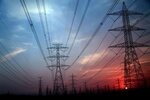News Release from American Clean Power Association (ACP)
Wind Industry Profile of
04/20/2011
AWEA - Does wind energy have value, even when it does not blow?
Setting aside for the moment the fact that no power plant runs 100% of the time, here's a simple way of looking at the question: Suppose you drive to work, five days a week, and you decide to buy a bicycle and bike to work when the weather permits, which turns out to be 3-4 days a week much of the year. But, you still need a car, because some days the weather is bad. Does your bike have no value?
Well, of course not:
- Your gasoline payments suddenly drops by 50% or so (whoa, it's almost as if you're getting 50 miles a gallon, instead of 25 mpg, for the same number of miles traveled).
- You are getting more exercise and becoming healthier - probably saving some additional money on health care, in the longer term.
- Your car is requires less wear and tear and will likely last quite a bit longer.
- You generate less air pollution per mile traveled, which is better for public health and also the environment.
This is a pretty close analogy to adding wind power to the electric utility system. Yes, fueled power plants are still needed, because sometimes the wind does not blow. But those same power plants, like your car, will run much less and use much less fuel whenever the wind is blowing.
Further:
- More money will be paid to farmers and ranchers who host wind turbines on their property (the "rent" for hosting a wind turbine amounts to $ 3,000 to $ 7,000 per year or more).
- Less water will be used. Thermal power plants--coal, nuclear, and natural gas--use an average of half a gallon of water for each kilowatt-hour of electricity generated, which means that roughly 5,500 gallons of water are consumed every year to produce the electricity used by an average American home. Wind uses virtually no water.
- Less air pollution, water pollution, and hazardous waste will be produced.
- Less mining and drilling for fuel will be needed.
- Less transportation of fuel will be needed (a secondary energy savings).
And what is the bottom line? Even if the wind doesn't always blow, wind energy is an energy source that makes perfect sense in a nation that is still getting 70% of its electricity from fossil fuels.
For more information on this article or if you would like to know more about what www.windfair.us can offer, please do not hesitate to contact Errol Stryker (Sales Manager North America & International) at es@windfair.us
www.windfair.net is the largest international B2B Internet platform – ultimately designed for connecting wind energy enthusiasts and companies across the globe!
Well, of course not:
- Your gasoline payments suddenly drops by 50% or so (whoa, it's almost as if you're getting 50 miles a gallon, instead of 25 mpg, for the same number of miles traveled).
- You are getting more exercise and becoming healthier - probably saving some additional money on health care, in the longer term.
- Your car is requires less wear and tear and will likely last quite a bit longer.
- You generate less air pollution per mile traveled, which is better for public health and also the environment.
This is a pretty close analogy to adding wind power to the electric utility system. Yes, fueled power plants are still needed, because sometimes the wind does not blow. But those same power plants, like your car, will run much less and use much less fuel whenever the wind is blowing.
Further:
- More money will be paid to farmers and ranchers who host wind turbines on their property (the "rent" for hosting a wind turbine amounts to $ 3,000 to $ 7,000 per year or more).
- Less water will be used. Thermal power plants--coal, nuclear, and natural gas--use an average of half a gallon of water for each kilowatt-hour of electricity generated, which means that roughly 5,500 gallons of water are consumed every year to produce the electricity used by an average American home. Wind uses virtually no water.
- Less air pollution, water pollution, and hazardous waste will be produced.
- Less mining and drilling for fuel will be needed.
- Less transportation of fuel will be needed (a secondary energy savings).
And what is the bottom line? Even if the wind doesn't always blow, wind energy is an energy source that makes perfect sense in a nation that is still getting 70% of its electricity from fossil fuels.
For more information on this article or if you would like to know more about what www.windfair.us can offer, please do not hesitate to contact Errol Stryker (Sales Manager North America & International) at es@windfair.us
www.windfair.net is the largest international B2B Internet platform – ultimately designed for connecting wind energy enthusiasts and companies across the globe!
- Source:
- American Wind Energy Association
- Author:
- Posted by Trevor Sievert, Online Editorial Journalist / By Tom Gray
- Email:
- windmail@awea.org
- Link:
- www.awea.org/...
- Keywords:
- awea, wind, wind energy, wind turbine, rotorblade, awea, ewea, wind power, suppliers, manufacturers, renewable energy, trevor sievert
All news from American Clean Power Association (ACP)
news in archive
Related News
China, Brazil Partnership
11/21/2024


























